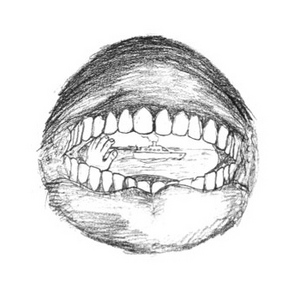This is an archive of the ArtCat Zine, 2007-2009. Please visit our new project, IDIOM.
Recently by B. Blagojević
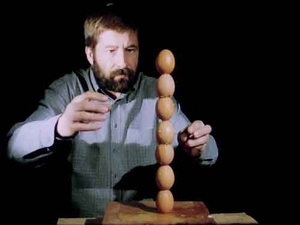
Artist Warren Neidich has organized a day-long panel discussion taking place tomorrow afternoon at The Drawing Center. Present will be a diverse group of artists and writers including Keller Easterling, Boris Groys, David Joselit, Jonatan Habib Engqvist and others. The topic at the center for the convergence will be art and power, or, to risk begging the same question the event's title suggests, the power of art. It's something of a perennial concern for culture workers in a country where contemporary art -- and the liminal conversations that recede from its limits into neighboring disciplines -- remains steadfastly excluded from the national discourse. In a cultural field as comparatively cash rich, media enabled and internationally dispersed, it's no small wonder why it remains sequestered from the more fluid stream of popular culture. To creatively illustrate the point we may cite a myriad of quotidian metrics, from relatively low museum attendance rates in relation to other Western countries, to the phantom readership of the ever expanding realm of arts journalism, as deftly outlined by James Elkins in his 2003 book What Happened to Art Criticism?. But power, of course, as living thinkers from Rancière to Groys remind us, does not necessarily equate visibility or even the consolidation of bodies and wills in time and space -- even though the popular imaginings of its resistance remain fixed on these models. With a gentle insistence, then, our editors suggest tomorrow's panel to readers interested in these questions.
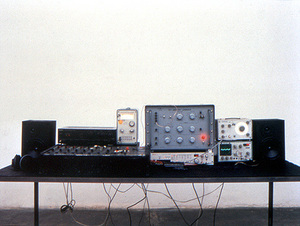
Collaboration in the visual arts today is not without its contested legacy. Some writers have characterized its manifestations among younger contemporary artists as a kind of collective self-branding, a retrofitting of collaboration's politically left or utilitarian origins (in the United States, certainly) to a sort of modish rock and roll production model. Others meanwhile have described artistic collaboration in the more polyvalent terms of a dispelling of the authorial heteronomy often resulting in an art system which calls for individual artist brands and highly deliberate career arcs. Curators, like artists, frequently collaborate on their own terms. The pracitice has been by now normalized in some very high profile and important international exhibitions. There, divisions of labor, curatorial "sub-contracting," and topical specialization have become the norm. So while artists and curators thus often work together to realize projects both ambitious and everyday, the art critic, meanwhile, remains strangely alienated from this otherwise socially promiscuous milieu.
The critical voice has of course historically been distilled and distributed in publishing as the a collective editorial voice, and yet new models of collaboration remain to be found. An event tonight at the National Academy Museum seems likely to formally speak to this issue. There, at 6:45, David Cohen will assemble the thirty first manifestation of his Review Panel series, inviting four young writers to comment on the New Museum's recently inaugurated generational triennial currently there on view.
Tomorrow meanwhile at Goethe's Institute's Wyoming Buidling, sound artist Carsten Nicolai will perform at 6pm, concluding the Institute's Reinventing Goethe project, a kind of collaborative and exposed reimagining of the event's host building. Of Nicolai's splintered affiliations one of the more noted is his co-founding of German electronic music label Raster Noton, which is next week opening a temporary botique at e-flux's New York location, the second in a series of exhibitions at the space.
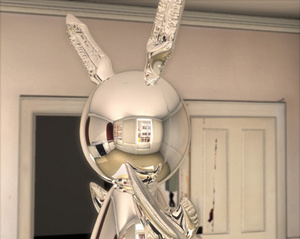
On Rhizome today, Brian Droitcour publishes a brief survey of last weekend's Migrating Forms at the Anthology Film Archives, the successor to the retired New York Underground Film Festival. Meanwhile tomorrow at the X initiative space in Chelsea, Ed Halter, ten-year programming veteran for the NYUFF, will sit on a panel with curators Chrissie Iles and Stuart Comer, as well as artists Gerald Incandela and James Mackay to discuss the Super-8 films of Derek Jarman, 'a cinema of small gestures,' recently on view at X. On Sunday meanwhile, Anthology Film Archives presents their annual Essential Cinema screening of George Landow/Owen Land's early works, another filmmaker of small gestures (in a very different sense).
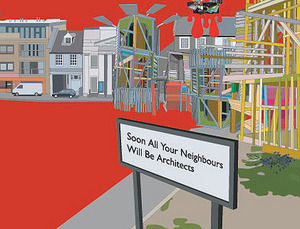
Alternative Architecture and Outlaw Design
Nils Norman and Eva Diaz
Cabinet - 300 Nevins St, Brooklyn NY
7pm Friday 24 April 2009
This Friday at Cabinet's Brooklyn event space, Nils Norman and Eva Diaz will be talking about Buckminster Fuller's lasting influence on contemporary architecture's encounter with housing crises and homelessness. Displaced from this influence today is much of the ideological underpinning that once informed and nurtured a resistant and pioneering spirit in both culture and politics among the intellectual malcontents of the Cold War's first few decades. This spirit or ideology today is today sometimes substituted by provisional, tactical and information-oriented engagements made necessary by an often deeply managed (commercially, legally) landscape. The talk will anticipate Norman's upcoming collaboration at SculptureCEnter, The University of Trash. From the press release:
Many people today are stimulated by Buckminster Fuller's post-war dome technologies, as well as other 1960s and 1970s-era shelter designs, to radically rethink architectural structures, both as a practical solution to urban housing crises and as a key historical trope of innovative "guerrilla" architecture. The difference today: gone is the frontiersman logic of back-to-the-land, drop-off-the-grid, atomized micro-environmentalism... What enters instead is a proposition of sculptural structures as temporary interventions in urban sites, of kiosk production and shelter-information display hybrids.

This week on Paper Monument's website Christopher Hsu contemplates the contemporary artist's relationship to work, grounding his meditation in the English-speaking artist's multivalent and frequent deployment of the word. The artist at work at once inhabits both the ideal sphere of gratuitous free action -- itself compelled by the art worker's very way of being in the world rather than some sort of compensatory system -- and at the same time a slightly distorted leftist legacy of creative or intellectual production aligned with its material or industrial counterpart. Even my own language here belies the pervasive entrenchment of this model -- how does one describe something as usefully ambiguous as cultural production without resorting to the language of industry?
Benjamin frames the affinity of the intellectual or the artist for the work of the proletariat class as a politically strategic relation, but we see its prototype even earlier when Marx postulates in the Theses on Fuerbach that the "philosophers have only interpreted the world, in various ways; the point is to change it." To change the world is to work -- to move from contemplation, to action, transforming the material, data, or social relations undergoing that action. The bifurcation of art from craft meanwhile -- of expert work and art work -- signals a means of action polar to the means of that action's intended effect. The contemporary artist, Hsu suggests, in her aggressive affirmation of her life's work, obfuscates the more deeply rooted and deliberate relationship to leisure at the core of her being in the world.
Tomorrow e-flux inaugurates its expanded downtown space with the opening of Unbuilt Roads, a new exhibition presented by Hans Ulrich Obrist. The show will function as an archive of unrealized artists projects and presents a companion exhibition to Obrist's 1997 book of the same title. Aggregating a set of orphaned or impossible projects, the exhibition seeks to mobilize a phantom and heterogeneous collectivity operating on a field of speculative reason and non-action. Whereas artistic agency may often be conceived as deliberate action founded on the contingent power of symbolic acts, the unrealized action then becomes a denser consolidation of that agency, divorced from the enabling or inhibiting potential of resources, exhibition opportunities and public access and opinion.
Also tomorrow is the fifth of six events accompanying On Certainty, a group exhibition and program curated by Sreshta Rit Premnath. At 3pm, legal scholar Lawrence Liang will present a paper at Bos Pecia gallery on the cultural and legal history of truth-making technologies -- lie detectors, narco analysis, focused and deliberate interrogation techniques and so on -- that have made a radical reemergence in both the popular imagination and law enforcement practice since 9/11. At the New School, meanwhile (as of today under student occupation, again) n+1 editor Mark Grief and several others host a panel titled What was the hipster?. And finally in Brooklyn, Vera List Center director Carin Kuoni will moderate a discussion at Smack Mellon between photographer Susan Meiselas and recent Guggenheim Fellow Carlos Motta as they discuss the documentary tendency in art making and, in particular, in Motta's project The Good Life, recently presented in New York at Creative Time's Democracy in America, Convergence Center exhibition at the Park Avenue Armory last fall.
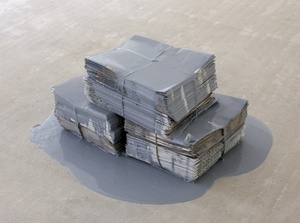
The Guggenheim museum recently announced the launch of Intervals, a new experimental programming series that will "allow the museum to respond quickly to innovations and new developments in contemporary art as they arise." The museum further sets an exciting tone for the upcoming series by selecting Julieta Aranda to install four new works across two of the museum's floors for its inaugural exhibition. Downtown, the New Museum prepares for next week's opening of Younger than Jesus, the institution's recently conceived generational triennial. Of the many ancillary events planned during the course of the exhibition the first discussion -- the irreverently (or cynically) titled panel Communism Never Happened -- is slated to bring together a group of Eastern European participants in the exhibition to reflect on coming of age in recently economically liberalized markets. Migrating Forms meanwhile has published the schedule for their 2009 film and video festival at the Anthology Film Archives beginning in two weeks. The program presents new feature-length work in a familiar festival format from Owen Land (his first film in over a decade) and Michael Gitlin, as well as features from Sharon Lockhart, Amie Siegel, Oksana Bulgakowa, and others.
E-flux just last week announced Unbuild Roads, a new exhibition curated by Hans Ulrich Obrist at it's Lower East Side location, marking the start a series of exhibitions and events at e-flux's newly opened lower level. Some weeks ago, a panel discussion on publishing and art journals was organized by e-flux at the same location.
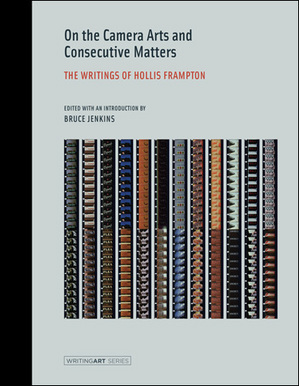
Several events in New York tonight call for some attention. First, in Chelsea, X hosts a public discussion between art historians Hal Foster and David Joselit as they discuss "recessional aesthetics" and whether the recently reconfigured public relationship with the material -- evinced most explicitly in the past few days by the populist furor over the 2009 AIG bonuses in this country and symbolic but grave actions across the European continent -- will necessarily compel a change in the public relationship with the cultural.
The New School, meanwhile, hosts a panel on girlhood, with a distinguished all-female group of speakers attending, including musician Kathleen Hannah, writer McKenzie Wark and several others. Anthropologist Michael Taussig will speak at NYU on a yet unpublicized topic. Further west, Renwick Gallery presents with the second night of its first invitational performance series, featuring Alexandre Singh, Tyler Coburn and others. And finally, Anthology Film Archives continues their second day of Hollis Frampton's Hapax Legomena series, coinciding with the recent publication of the intensely ambitious filmmaker's collected writings. It's also worthy of note that Anthology has arranged a group of remarkable guests to introduce the individual film programs of the cycle, including Keith Sanborn, Annette Michelson, P. Adams Sitney, Bill Brand, Bruce Jenkins and Gerry O'Grady.
Tomorrow evening Anthology Film Archives sees the New York premier of Michel Auder's The Feature, a major new work on high definition video. The culmination of over 40 years of often intensely personal diaristic video making, The Feature presents a three hour journey through the videomaker's life, one of any number of such narratives possible, as Auder himself states in the work's trailer. The video also features new footage produced with co-director Andrew Neel, grandson of painter Auder’s friend and video subject, Alice Neel. Michel Auder is an early pioneer of the video diary form, in whose legacy several generations of motion picture artists continue to work. The continual blending of life and work, and his long-standing collaborations, friendships and affairs with a remarkable cast of artists (Andy Warhol, Cindy Sherman, Annie Sprinkle, Gregory Corso, and others) distinguish his oeuvre as much as the emotional sophistication that runs throughout.
After premiering on Wednesday at 7, it will show again nightly through Tuesday 24 March.
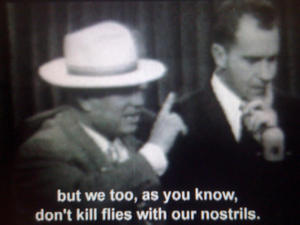
DOUBLE TAKE, followed by Q&A with Johan Grimonprez
6:30 Wednesday 25 February 2009
Sean Kelly Gallery - 528 W. 29th St, New York NY
The centerpiece of Belgian artist Johan Grimonprez's current solo exhibition at Sean Kelly Gallery is Double Take, a new feature-length video playing daily at scheduled times during the gallery's normal hours. The film is the second major video work to follow Johan's 1998 breakthrough Dial H-I-S-T-O-R-Y, a study of political radicals operating as airplane hijackers and their transformation in both the media landscape and popular imagination since the 1960s. Grimonprez's new work, co-written with novelist Tom McCarthy, turns an obsessive eye to Alfred Hitchcock, theorizing his creative output from the 50s and 60s in the greater context of Cold War American culture. Like Dial H-I-S-T-O-R-Y , the new video is composed of a melange of diverse media, from broadcast television to some odder moments of Hitchcock features. The work's central narrative features a Borges-like short story, narrated by a Hitchcock soundalike, about the filmmaker meeting his double on the set of The Birds.
In addition to regular programming during gallery hours, Sean Kelly Gallery has scheduled several after-hours evening engagements in which the film will be be shown. The first such engagement will be this Wednesday at 6:30, followed by a Q&A session with the filmmaker. This event comes highly recommended.
ZINE
HOME
TIPS / COMMENTS
CATEGORIES
CONTRIBUTORS
- Greg Afinogenov
- B. Blagojevic
- Adda Birnir
- Susannah Edelbaum
- Julie Fishkin
- Paddy Johnson
- Jessica Loudis
- Christopher Reiger
- Andrew Robinson
- Peter J. Russo
- Blythe Sheldon
- S.C.Squibb
- Hrag Vartanian

